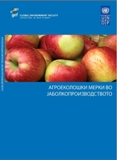Fish and Fisheries
Biodiversity vs. Livelihoods
Due to the geographic isolation of the Prespa Lakes, the number of endemic fish species is very high. The maintenance of the endemic species in the Prespa Lakes basin is of central ecological importance because their local extinction would mean global extinction. Despite that, not all of the endemic fishes in the basin are given legal protection.
Curiously enough, even the eel can be found in Prespa, despite the fact that the lakes have no direct connection to the sea.
The wider area is also a home to not one, but two endemic trout species. The Pelister stream trout belongs to the Braycinska River in the Prespa Lakes Basin, while the Pelagonian stream trout belongs to the Maloviska River and the Crna River basin (ie the Axios/Vardar basin).
Nearly one third of all the fish species are classified as endemic – seven. The total of 23 species and two hybrids includes 12 indigenuous fish species. The rest – exotic species – have been introduced by humans, deliberately or by accident.
Species found in the Prespa lakes only and in no other place in the world: Prespa bleak (Alburnus belvica), Prespa nase (Chondrostoma prespense), Prespa barbel (Barbus prespensis), and Prespa loach (Cobitis meridionalis). In addition, the Pelister stream trout (Salmo peristericus) may only be found in the rivers in the basin, such as River Braychinska and its tributaries, Aghios Germanos stream, and others. The Prespa roach (Rutilus prespensis) and the Prespa minnow (Phoxinellus prespensis) are considered Balkan endemics.
The Prespa barbel is protected by the Habitat Directive of the European Commission, (Annex V), whereas the protection for the Prespa bleak is provided by the l the Bern Convention (Annex III).
Managing Fisheries and Fish Biodiversity
Fishing is reported to be one of the most important sources of income for the Albanian part of the basin, contributing more than 15% of the annual per capita income. In the Greek share of the basin, approximately 13% of the labor force is currently involved in fishing.
Statistical data on fishery production and the species caught in the Prespa lakes basin are, nevertheless, fragmentary. In Micro Prespa, from 1960 onwards, production has been steadily decreasing due to different factors, including initial overfishing, habitat change, and socio-economic change. Data on fish production in Macro Prespa are even less accurate and vary greatly over the years. In general, fish production in the basin has suffered a serious decrease over the last two decades or so due to a combination of ecological, social and economic factors.
The reported decline of the fishery in the basin is but one indicator of the ongoing changes in the lake ecosystems. The fish biota in the Prespa lakes basin has been under an increasing pressure from different human activities such as water abstraction, pollution, over fishing of certain species in the past, but also introduced species. For instance, the populations of some of the indigenous fishes have been apparently decreasing due to overlapping diets with introduced species. Moreover, predation on endemics’ eggs and fry has caused reduction in the size of, and change in the structure of the populations of some indigenous species, such as the carp, chub, Prespa barbel, and Prespa nase. Ultimately these changes have altered the entire biological community and possibly trophic structures of lake ecosystems. In other words, changes in fish biodiversity have affected other species, higher (birds) and lower (plankton) on the food web, resulting in disturbances in the lake ecosystem functioning.
It is worth noting that the adverse effects of the human activities are aggravated by the increasing effects of climate aridity.
Prespa Park Helps Restore Prespa’s Fishery
The restoration of fisheries in the basin is high on the Prespa Park priority list. Serious efforts are being invested into increasing the transboundary cooperation on:
-
Basin-wide assessment of fish resources, related habitats and biological demands;
-
Development of common sustainable fisheries plan, including a common licensing system, and uniform fishing regulations; and
-
Monitoring the ecological impacts of the introduction of exotic species, and other.
In addition to this, the joint Strategic Action Plan for the Sustainable Development of the Prespa Park proposes a number of specific actions at the national level, such as:
-
The introduction of a fishing ban during the spawning period for selected species, and the modernization of the basic fishing infrastructure in Albania.
-
The achievement of the optimum lake level to permit fish spawning and the promotion of the management of wet meadows in Greece.
-
The protection of River Golema - a spawning habitat for a significant portion of Prespa fishes, in The Former Yugoslav Republic of Macedonia.




